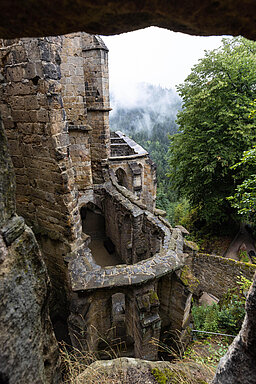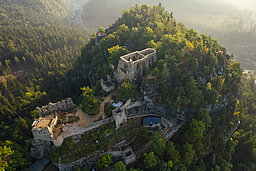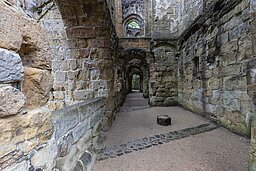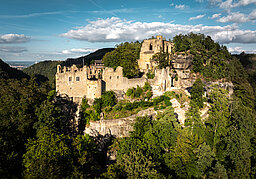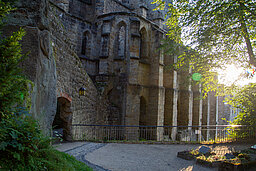

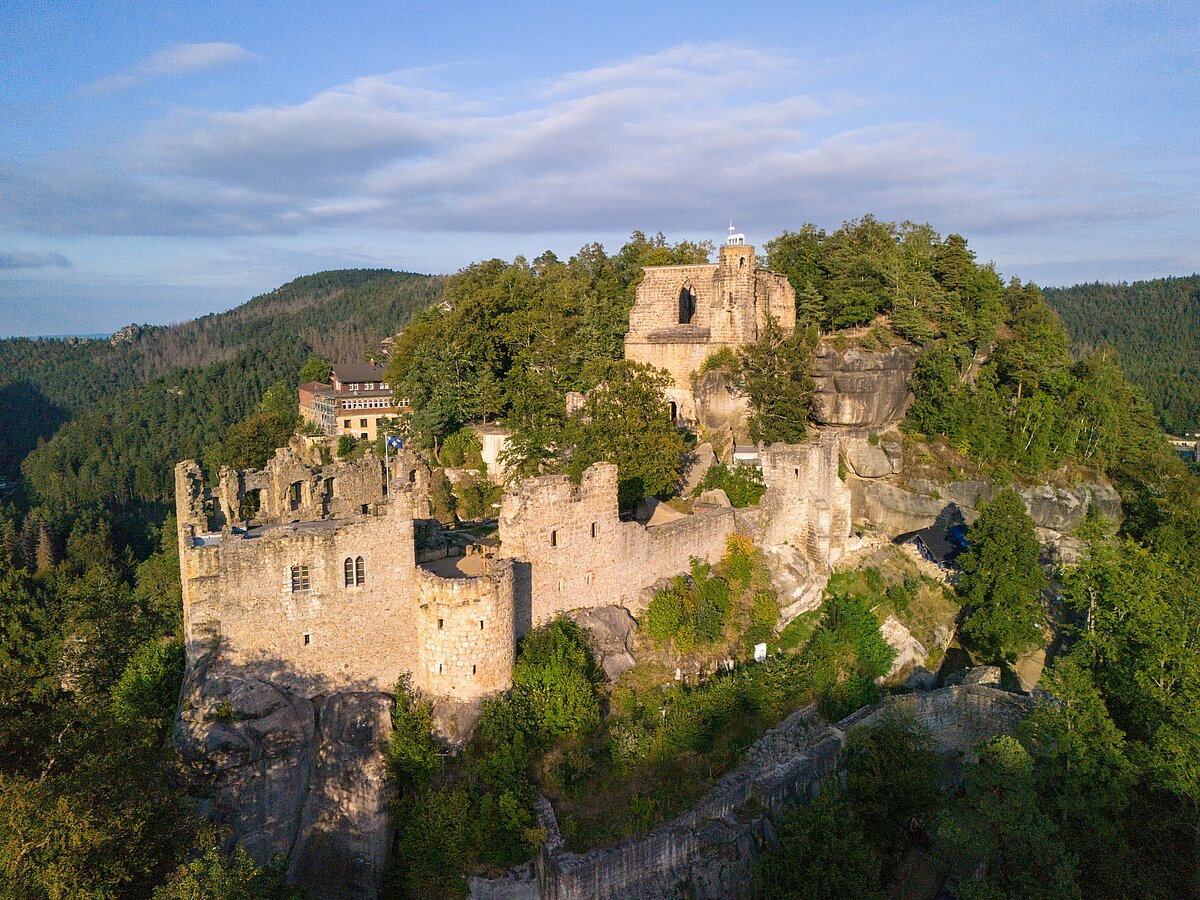
The ruins of the medieval castle and the neighboring monastery complex on the most famous mountain in the Zittau Mountains, Oybin, are clearly visible from afar. Until Emperor Charles IV had his residence built here against the mighty backdrop of the sandstone massif, the residential tower was the most important building. This is now home to the Oybin Museum. Historical monk processions take place regularly in the summer months.
November to March 10.00 a.m. - 4.00 p.m.
April to October 9.00 am - 6.00 pm
By car: Take the B178 to the Großhennersdorf exit. Follow the B178 until you turn onto the B96 in Niederoderwitz. From Zittau follow the signs to Oybin.
Public transportation: Take a train to Zittau. From there, take a bus or cab to Oybin.
The scenery is almost mystical. The mighty ruins of the Oybin castle and monastery complex rise up in the middle of a huge sandstone massif, in a valley basin surrounded by volcanoes. The remains of the walls are clearly visible from afar. It seems as if they have been carved into the rock of the Zittau Mountains. A mysterious place whose special combination of the impressive forces of nature and medieval architecture attracts up to 100,000 visitors to the Zittau region every year and which has already inspired important Romantic painters to create masterpieces.
It was the Bohemian King and German Emperor Charles IV who discovered the mighty mountain backdrop for himself and made an unmistakable mark on the 514-metre-high Oybin by building his residence and founding a monastery for the Cölestine Order. The influence of Peter Paller's Prague cathedral building workshop in the construction of the monastery church is still clearly visible today. For 33 years, part of the Prague cathedral treasury lay hidden on the Oybin.
But then the Reformation and Counter-Reformation put an end to monastic life and the complex was largely destroyed by a lightning strike in 1557. Around 100 years later, the last buildings also fell victim to a rockfall. Among other things, the “library window” was saved, which still bears witness to the splendor and beauty of Oybin Castle & Monastery today.
Until the age of Romanticism dawned and painters and poets sought new answers to their questions in deserted places in nature. Caspar David Friedrich was one of the most important artists to be inspired by the overgrown ruins on the Oybin in the 19th century, making the mystical place widely known. Four of his original Oybin motifs alone can be seen in exhibitions around the world. But the former residential tower of the medieval castle from the 13th century, which now houses the Oybin Museum, also has its own exhibition dedicated to him and other Romantic painters. In addition, further exhibitions provide information about the builder Charles IV and the Cölestine Order as well as the numerous researchers and scholars who made Oybin the subject of scientific works, travel guides and imaginative treatises.
Outside, two circular paths and the north and south plateau lead through the four-hectare site with its castle, monastery corridor and mountain cemetery, which can be explored on a guided tour or on your own.
